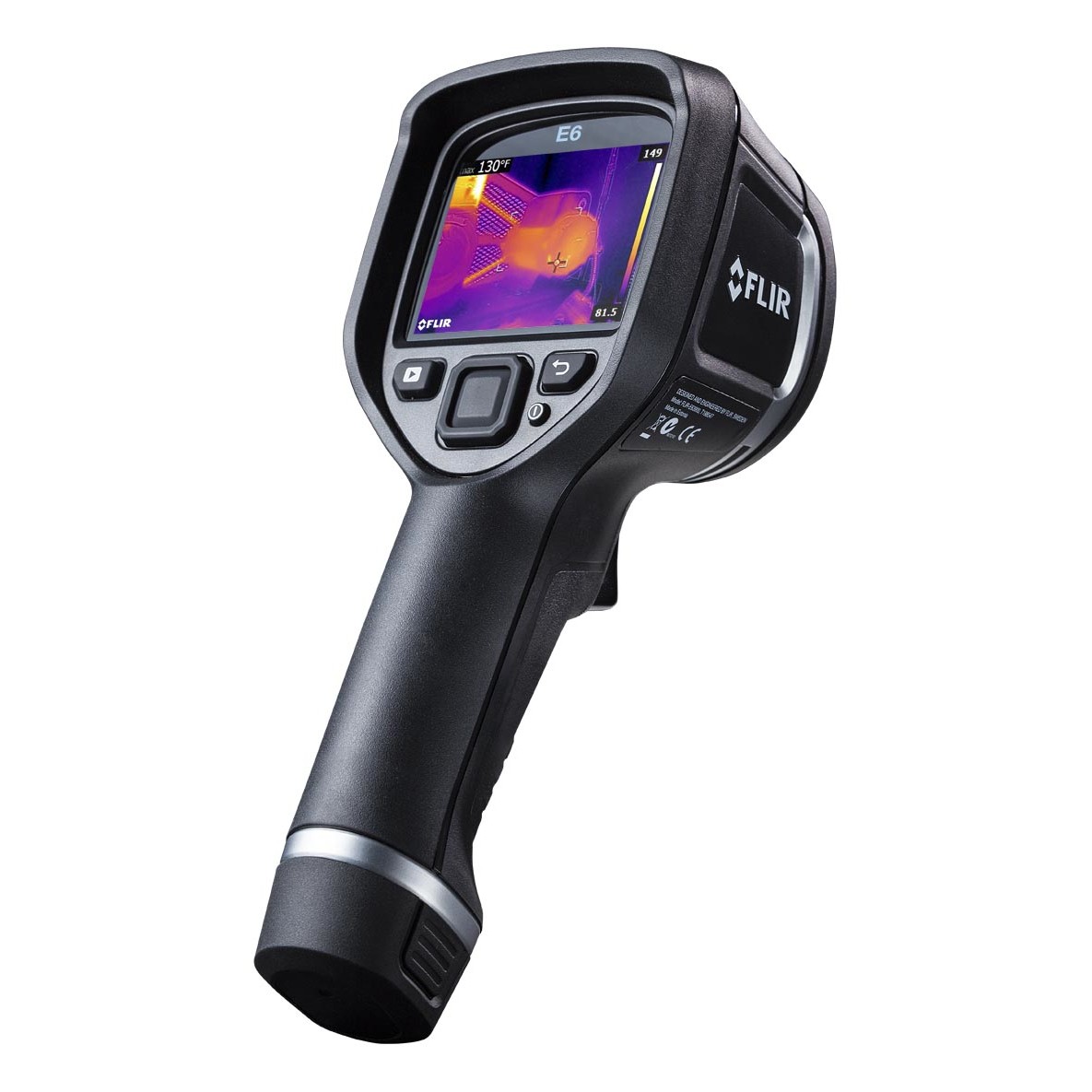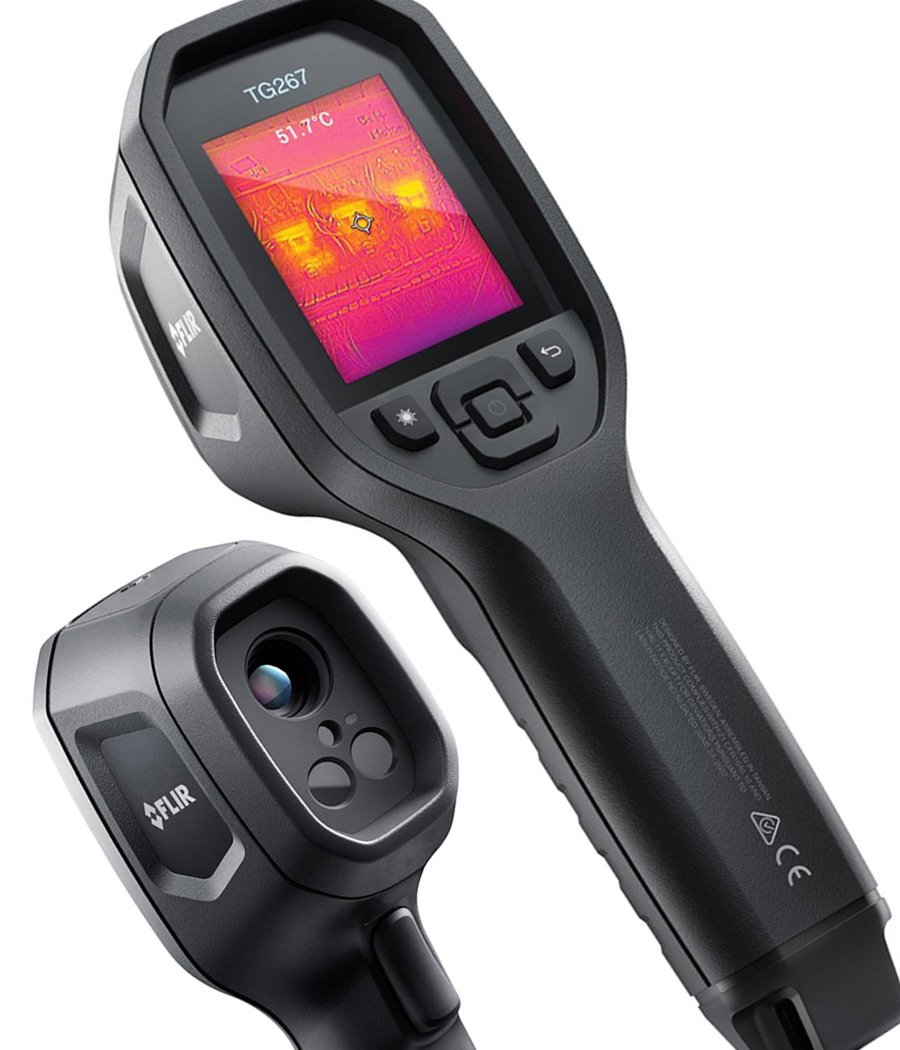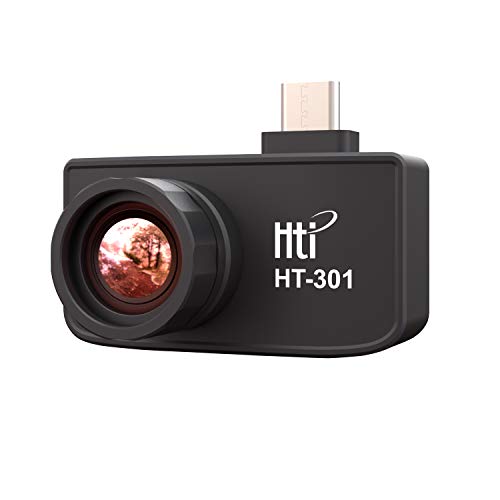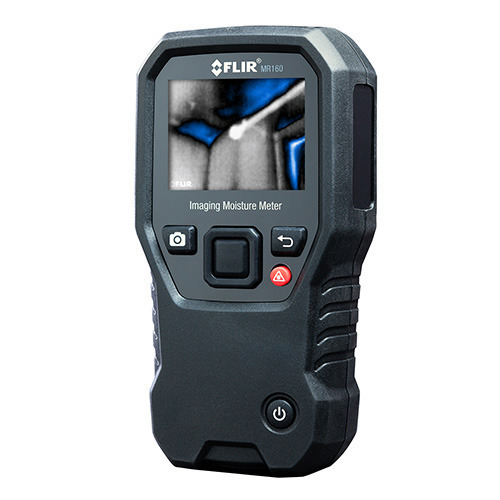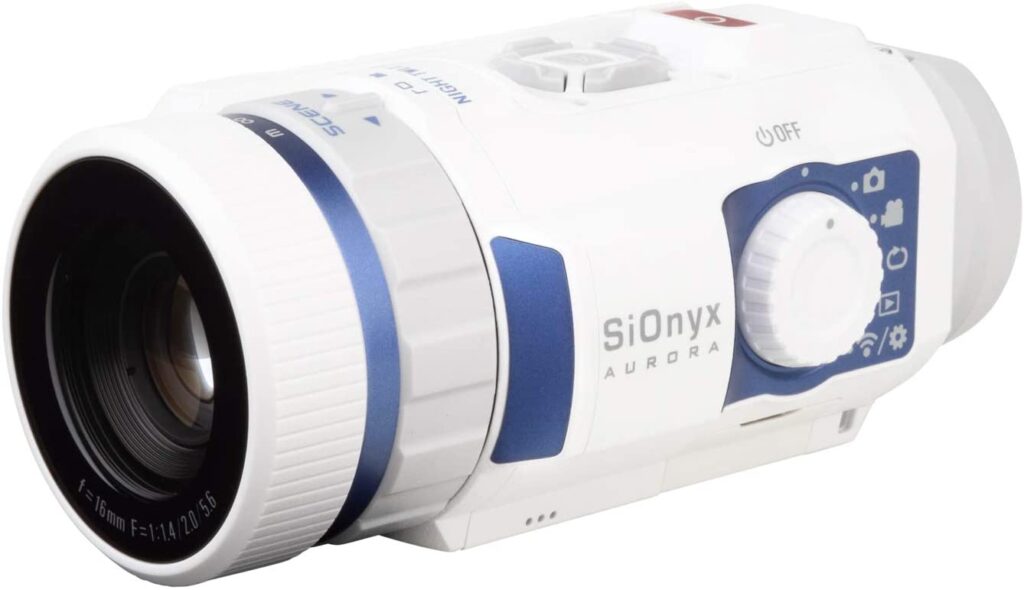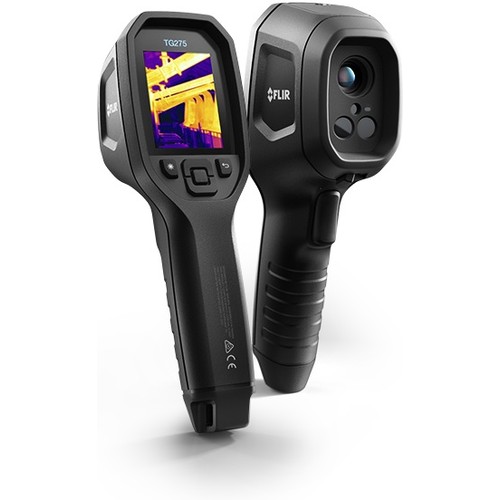From plumbing to automotive diagnostics and electrical inspections, we will explain each use case and application for a thermal camera. Prices for consumer thermal cameras have gotten so low that now, any inspector, engineer or enthusiast can purchase one to detect and diagnose issues that would have otherwise taken much more.
Electrical Inspections
You can use an infrared thermal camera to diagnose electrical installation issues. The most frequent use case is detecting components that overheat, like fuses and parts with high resistance. Every electrical component which has current flowing through it will emit a certain amount of heat (This is called resistance and is defined by Ohm’s law). Using the thermal camera, you can measure the amount of heat radiated and find loose connections, contact problems and overloaded circuits. Always remember, when you are measuring it is important that there is load on the electrical system, a 50% minimum load is recommended here. The idea is the more load, the more heat and thus you get more contrast in the thermal image. Also, you can’t use them to peek into electrical cabinets because they will mostly insulate the heat trapped inside and you won’t be able to get an accurate measurement if you don’t open them.
Popular use case – HVAC inspections
One of the most popular applications of infrared camera has been HVAC Inspections for heating and cooling issues. Everyone has to call an HVAC inspector at some point for their home and the thermal camera has become one of the main tools that inspectors use to detect things like moisture and water leaks. The way in which the camera detects water leaks is by pointing it towards parts of the HVAC system, the parts where moisture or water has built up will generally appear cooler. Now moisture is a bit trickier because you need a camera with a higher thermal sensitivity to easily detect it, since it isn’t significantly cooler. You can also spot condensation which is the result of evaporative cooling. You can use the camera to diagnose all of the HVAC components including compressors, boilers or chillers. Usually a thermal imaging device will be able to spot an issue long before it damages your system and it gives you enough time to act on it and avoid costly repairs. You don’t need to necessarily rely on an HVAC inspector, you can also buy a consumer thermal camera for under 1000$ these days.
PCB Boards and Electrical Boards
Another great use case for thermal cameras is inspecting PCB Boards. Many enthusiasts on the internet have used consumer thermal cameras to inspect which chips on the printed circuit board are overheating in order to improve the design. Manufacturing defects can be easily detected and then there are cold joints when a component on the board is not correctly mounted. If a chip stops functioning, it will immediately show up on the thermal image without the need to do any functional testing. The camera can shorten the development time of prototype boards.
Plumbing and leak detection
If you are a plumber, then you can use an infrared camera to find leaks in the pipe system. If you use a high resolution thermal camera, you can find even the smallest leaks that may go unnoticed in an inspection. Thermal cameras are used for inspecting a hot water pipe, because the leaks will show up warmer than the pipe itself and you’ll easily spot them. Thermography and thermal imaging make it very easy to inspect the water flow throughout the system. Another issue that you can detect is moisture patterns. If you just point it towards the corners of the rooms in your home, you’ll be easily able to spot moisture patterns that are forming and these can be the result of pipe leaks, condensation or poor insulation.
You can use a thermal camera to spot wildlife
Ecologists use thermal cameras to do surveys and research on animal species in the wild. The device makes it easier for specialists to detect them in the wild especially for creatures that only come out of their nest at night. And this method works much better than just trapping them, because there is no interaction. Hunters use thermal scopes in order to get better views of the animals they are hunting. While we do not encourage this practice, we do recognize that there might be situations in which there are dangerous animals which might have escaped captivity or just situations in which they need to be caught and thermal scopes or thermal monoculars can help by using thermography to detect their heat signature.
Automotive diagnostics
As an automotive repair specialist, you can diagnose problems with an engine just by measuring the emitted head in different parts of the system. For example if a piston is misfiring, it will show up as colder than the other pistons of the engine or if it is not working at all, then it will appear considerably colder and you do not even need to plug the OBD tool to find it. Then there is the exhaust which can sometimes overheat. The more you inspect cars with a thermal camera, the more you get accustomed to what the temperature of different car parts should be when they are functioning correctly. But it is not only limited to the engine, because you can use the thermal imaging system to easily detect locked brake calipers, just by measuring the temperature difference between them on each side. Electric components like switches, cables and relays can be monitored to find out if they are working or overheating. These tools will become more and more important for mechanics and are already used for diagnosing issues before they damage the engine.
Other applications you can use a thermal camera for
Apart from the uses that we listed here, people are buying and using consumer cameras in more and more creative ways. You can inspect the roof of your house for leaks and poor insulation and while you are up there, you can also inspect the solar panels if they are functioning properly or for cracks and damage. Then there are refrigeration devices which you can check for malfunctions and also poor insulation. They work at the opposite end of the spectrum too because they are used for inspect electric heaters and boilers. Then there is the issue of air quality where you can measure how many houses are using chimneys just by pointing the camera at them. And since we’re on the topic of fire, these tools have become essential for firefighters to find either people which are trapped inside a building or under debris and also navigate through dense smoke.
Why use a thermal camera in the first place?
The main reason to use one is because you can detect issues that you just can’t see with the naked eye. Another very good reason is that even when you are dealing with issues that maybe you could spot yourself, it greatly speeds up the time it takes for you to diagnose them. If you are a mechanic you might be able to find a piston that is not working correctly without taking the engine apart and if you are a plumber you might see a leak without having to break the wall.
How do you use a thermal camera?
Most of the cameras available on the market are very easy to use and you don’t need a user manual to start them and capture images. However, it is good to get accustomed to a few notions: emissivity, reflected temperature, thermal sensitivity, thermal accuracy and the types of color palettes and what each one is best for. You’ll find all this information either by reading the user manual or just googling it.
How do thermal cameras work?
These devices use a thermal sensor that can measure a spectrum of light which is invisible to the human eye, called infrared radiation. The thermal sensor just captures the heat that the objects emit, quantifies and approximates it. The emitted heat of an object is something which we as humans are not capable of detecting without touching . Of course the technology behind it is much more complex.
Are thermal cameras dangerous?
No, thermal cameras are perfectly safe because they do not emit any kind of radiation, they just measure infrared light in a non-contact and non-invasive manner.
The only risk that they pose is to privacy, through widespread security cameras which embed thermal imaging. This is a topic that has been broadly discussed recently.
Can infrared cameras see through walls?
No, they cannot see through walls or at least the technology that is available to consumers at this point is not capable of doing so. But they can detect objects that are embedded into the wall and which emit a sufficient amount of heat, so that the exterior part of the wall heats up, things like water pipes.
Which infrared camera is the best for general use?
We found the Flir C5 to be the best all-round thermal camera because of its many features like cloud connectivity, MSX image enhancement and large touchscreen. It has a high thermal resolution, good sensitivity and accuracy along with all the connectivity options from USB to Wi-fi and Bluetooth.
Can thermal cameras detect body temperature?
Yes. However you need to correctly set the emissivity value for human skin, then point it at the forehead where you are likely to get the most accurate measurement. Depending on the accuracy and the thermal sensitivity of the camera which you are using, you can detect a fever. However, a thermometer is much better suited to this application, either a classic or laser IR thermometer.
Where can I buy an infrared camera?
In the past they were only available as niche products with a high price tag, however you can find more than 50 models of perfectly usable infrared cameras on Amazon under 1000$. We estimate that the price is going to steadily drop as infrared sensors and the image processing chips get better and cheaper.

